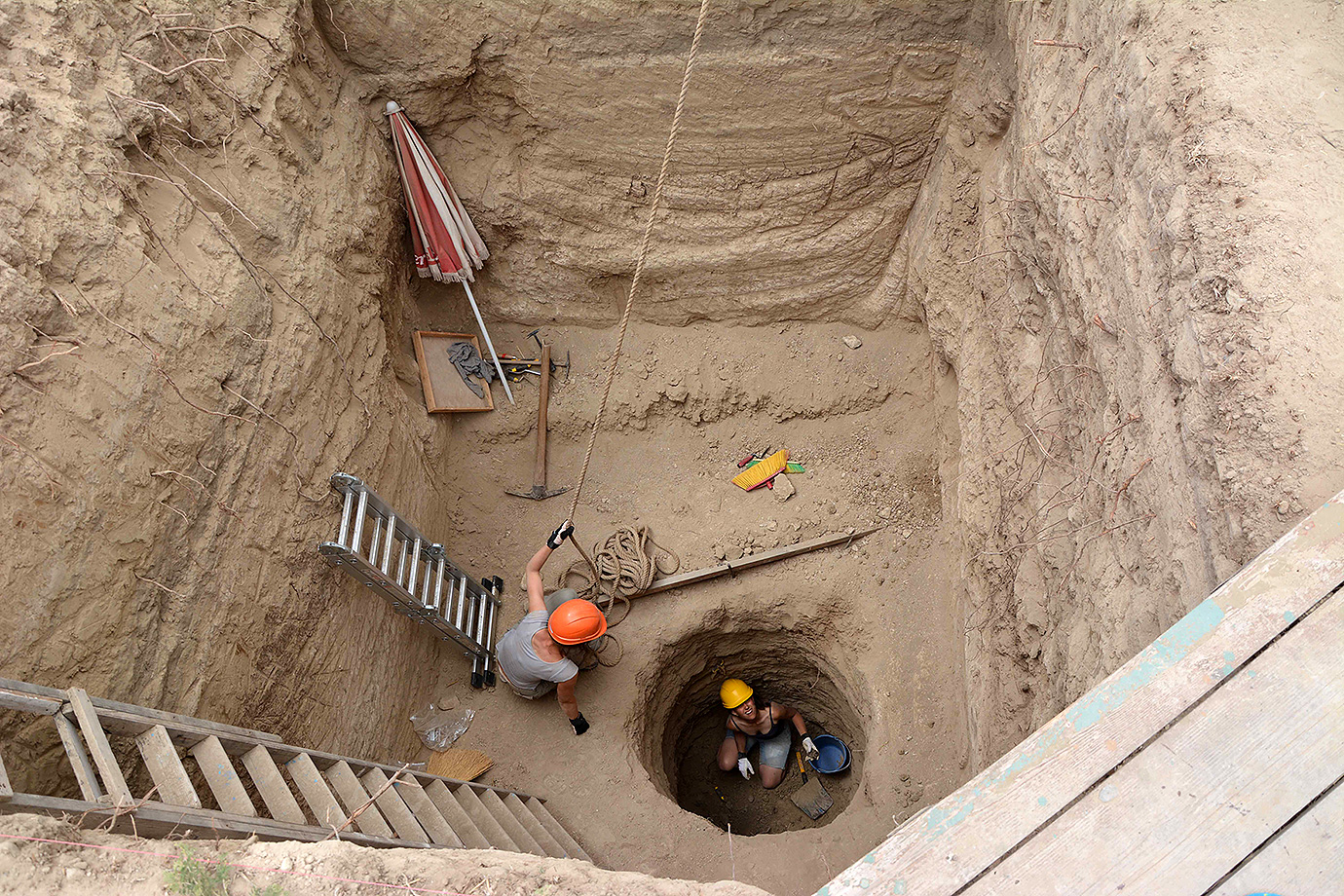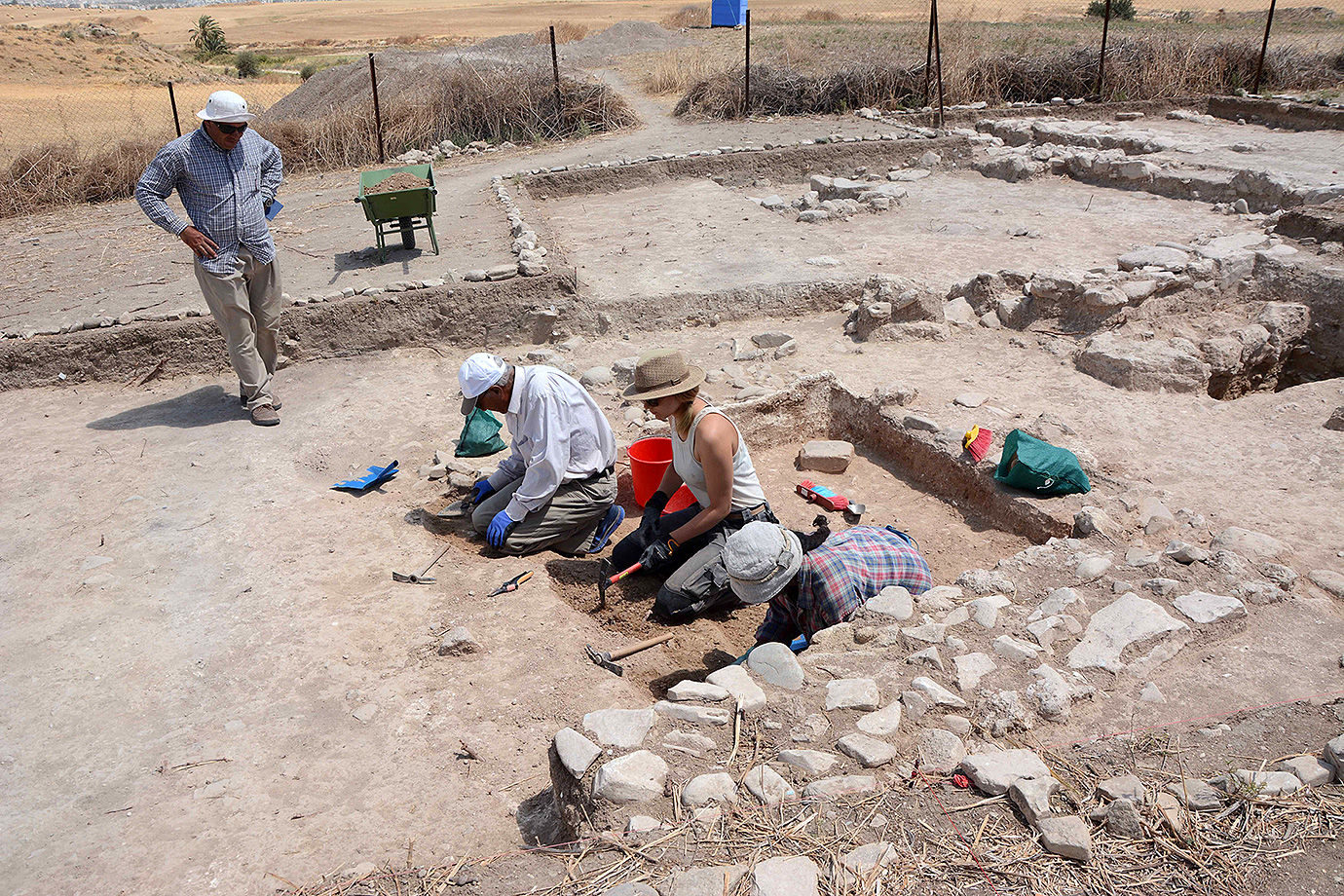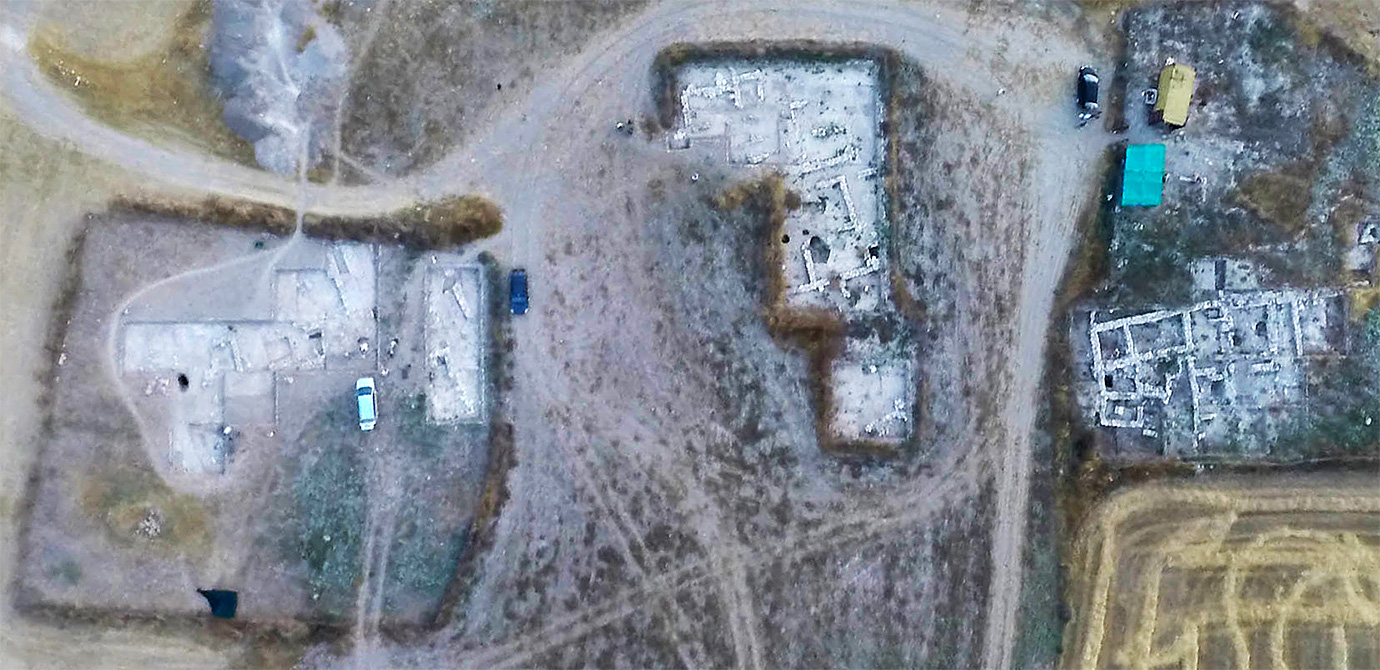 Excavation of a well in Hala Sultan Tekke. Photo: Peter Fischer.
Excavation of a well in Hala Sultan Tekke. Photo: Peter Fischer.
The Bronze Age city Hala Sultan Tekke (about 1600−1100 BC) in Cyprus is much larger than previously thought, and new finds suggest that its inhabitants were involved in trade reaching far beyond its immediate neighbours. Last summer, a Swedish archaeological expedition from the University of Gothenburg continued its excavations, and Cypriot authorities recently presented some interesting findings.
‘The city may have been up to 50 hectares in size, which would make it one of the largest Bronze Age cities, maybe even the largest, in the eastern Mediterranean region,’ says Peter Fischer, professor of Cypriote archaeology at the University of Gothenburg who since 2010 has been in charge of the excavations.
Hala Sultan Tekke is located near the airport in Larnaca. The city bloomed during the period 1300−1150 BC and was subsequently destroyed and abandoned for unknown reasons. The so-called Sea Peoples may have invaded the island and contributed to its demise.
Decades of farming in the area of the city have affected the remains since the buildings, which are made of stone and sun-dried clay, have lain hidden immediately below the ground surface. Modern ploughing affects near-surface archaeological remains 20−30 centimetres into the ground, which means that constructions from just before the city was abandoned are partly destroyed while older remains from around 1200 BC and as early as 1600 BC are in better condition.
 ‘One thing we uncovered was a 2.1 x 2.7 metre pool-like structure, which most likely was used to dye textiles purple. Purple-dyed textiles were amongst the most valued merchandises at that time. We also found ceramic bowls and jugs, loom weights, an amulet in the form of a scarab and jewellery in gold and silver,’ says Fischer.
‘One thing we uncovered was a 2.1 x 2.7 metre pool-like structure, which most likely was used to dye textiles purple. Purple-dyed textiles were amongst the most valued merchandises at that time. We also found ceramic bowls and jugs, loom weights, an amulet in the form of a scarab and jewellery in gold and silver,’ says Fischer.
The finds provide evidence of far-reaching intercultural trade connections during the Bronze Age. Fischer and his team have found objects from areas such as the western Mediterranean, southern and central Europe as well as the Levant (the countries east of the Mediterranean Sea) and Egypt. Lapis lazuli, a deep blue gemstone, was imported all the way from Afghanistan during this time, and amber originated from the areas around the Baltic Sea.
‘The connections with the Nordic countries are also verified through Swedish finds of Cypriot copper from the Bronze Age. It is fair to refer to the Bronze Age as a “golden age” in the history of humankind during which sophisticated civilisations established a network of intercultural contacts.

Additional prospecting in order to identify the complete extent of the city of Hala Sultan Tekke using ground-penetrating radar have been planned but will ultimately depend on financial resources. The Swedish team and colleagues from the Ludwig Boltzmann Institute in Vienna will apply for the necessary funding in spring 2016. The team from Vienna are world leading in the field of non-destructive use of ground-penetrating radar, which can yield images of remains buried at a depth of several metres.
Fischer has also recently received a large grant from the Swedish Research Council. The money will be used for a 4-year project in which he and his team will explore possible evidence of immigrants, the s.c. Sea Peoples, to Cyprus around 1200 BC.
‘The Sea Peoples is a term that can best be described as extensive migration from the region of present-day Italy through Anatolia and Cyprus to the Levant and Egypt – meaning the opposite direction of the current stream of refugees,’ he says.
More information:
Peter Fischer, tel.: +46 (0)707 53 43 17, email: peter@fischerarchaeology.se

 ‘One thing we uncovered was a 2.1 x 2.7 metre pool-like structure, which most likely was used to dye textiles purple. Purple-dyed textiles were amongst the most valued merchandises at that time. We also found ceramic bowls and jugs, loom weights, an amulet in the form of a scarab and jewellery in gold and silver,’ says Fischer.
‘One thing we uncovered was a 2.1 x 2.7 metre pool-like structure, which most likely was used to dye textiles purple. Purple-dyed textiles were amongst the most valued merchandises at that time. We also found ceramic bowls and jugs, loom weights, an amulet in the form of a scarab and jewellery in gold and silver,’ says Fischer.